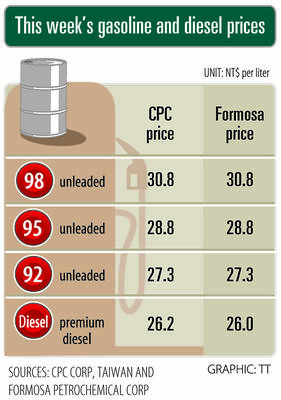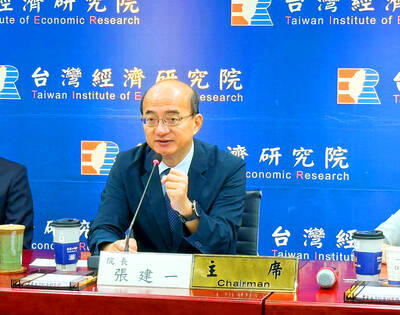One-third of Taiwanese companies miss opportunities to trade with foreign partners because of an inability to assess risks involved, according to a survey by Euler Hermes, an international trade credit insurer.
The past five years have seen a significant shift in trade focus from traditional markets such as the US and Europe toward Asian countries — particularly China, Euler Hermes said.
The shift has enabled the nation’s exporters to seize opportunities generated by the growing environment, but has also created new challenges that they had not experienced in the past, said Edmond Lee (李一民), general manager of Euler Hermes in Hong Kong, Taiwan and Korea.
“The tremendous increase in Asian regional trade means that many companies are now doing business with partners they have never traded with before,” Lee said.
An inability to assess potential business partners from overseas has meant that more than one-third of Taiwanese firms have missed out on business opportunities, Lee said, citing a survey of 300 domestic firms.
When asked what their greatest challenge was, 22 percent cited cash flow management and 13 percent identified collection of account receivables, the survey showed.
The findings show the importance of liquidity if buyers are unable to pay, Lee said, adding that nonpayment of invoices weakens a business and reduces its investment capacity. This is a particularly frequent issue when venturing into new markets or accepting new buyers, Lee added.
Trade credit insurance is an effective protection against nonpayment that can account for 40 percent or more of a company’s assets, Lee said.
Insurance can also increase a company’s confidence in extending credit to new customers, making the company more competitive, said Lee whose company set up an office in Taiwan on Wednesday last week.
Policyholders often benefit from access to bank funding at lower interest rates due to their protected cash flow, he said.
Three-quarters of Taiwanese exports are traded within the region, with China topping the list at 41 percent, the survey indicated, while developed markets like Europe and the US account for a combined 25 percent share of total exports.
Euler Hermes is present in more than 50 countries and keeps a global network of 1,500 risk experts and economists to monitor the financial health of exporters’ customers domestically and across multiple countries and sectors.
“Reducing the risk of nonpayment begins with gathering relevant and up-to-date information,” Lee said.
Euler Hermes’ worldwide risk information database tracks companies active in markets representing 92 percent of global GDP.

SETBACK: Apple’s India iPhone push has been disrupted after Foxconn recalled hundreds of Chinese engineers, amid Beijing’s attempts to curb tech transfers Apple Inc assembly partner Hon Hai Precision Industry Co (鴻海精密), also known internationally as Foxconn Technology Group (富士康科技集團), has recalled about 300 Chinese engineers from a factory in India, the latest setback for the iPhone maker’s push to rapidly expand in the country. The extraction of Chinese workers from the factory of Yuzhan Technology (India) Private Ltd, a Hon Hai component unit, in southern Tamil Nadu state, is the second such move in a few months. The company has started flying in Taiwanese engineers to replace staff leaving, people familiar with the matter said, asking not to be named, as the

The prices of gasoline and diesel at domestic fuel stations are to rise NT$0.1 and NT$0.4 per liter this week respectively, after international crude oil prices rose last week, CPC Corp, Taiwan (台灣中油) and Formosa Petrochemical Corp (台塑石化) announced yesterday. Effective today, gasoline prices at CPC and Formosa stations are to rise to NT$27.3, NT$28.8 and NT$30.8 per liter for 92, 95 and 98-octane unleaded gasoline respectively, the companies said in separate statements. The price of premium diesel is to rise to NT$26.2 per liter at CPC stations and NT$26 at Formosa pumps, they said. The announcements came after international crude oil prices

SinoPac Financial Holdings Co (永豐金控) is weighing whether to add a life insurance business to its portfolio, but would tread cautiously after completing three acquisitions in quick succession, president Stanley Chu (朱士廷) said yesterday. “We are carefully considering whether life insurance should play a role in SinoPac’s business map,” Chu told reporters ahead of an earnings conference. “Our priority is to ensure the success of the deals we have already made, even though we are tracking some possible targets.” Local media have reported that Mercuries Life Insurance Co (三商美邦人壽), which is seeking buyers amid financial strains, has invited three financial

CAUTION: Right now, artificial intelligence runs on faith, not productivity and eventually, the risk of a bubble will emerge,’ TIER economist Gordon Sun said Taiwanese manufacturers turned more optimistic last month, ending a five-month streak of declining sentiment as concerns over US tariffs, currency volatility and China’s overcapacity began to ease, the Taiwan Institute of Economic Research (TIER) said yesterday. The manufacturing business confidence index rose 1.17 points from June to 86.8, its first rebound since February. TIER economist Gordon Sun (孫明德) attributed the uptick to fading trade uncertainties, a steadier New Taiwan dollar and reduced competitive pressure from Chinese producers. Taiwan’s semiconductor industry is unlikely to face significant damage from Washington’s ongoing probe into semiconductors, given the US’ reliance on Taiwanese chips to power artificial